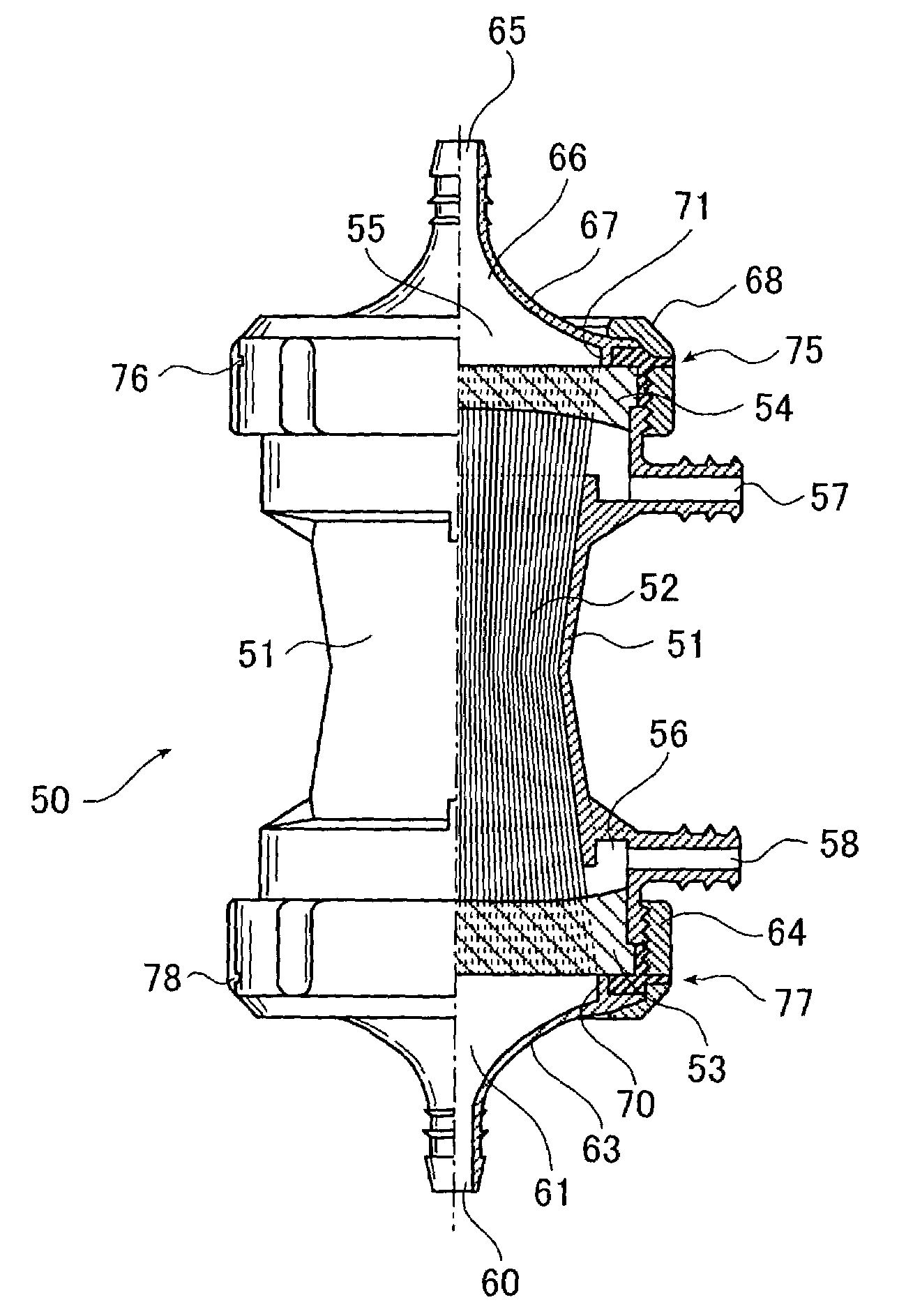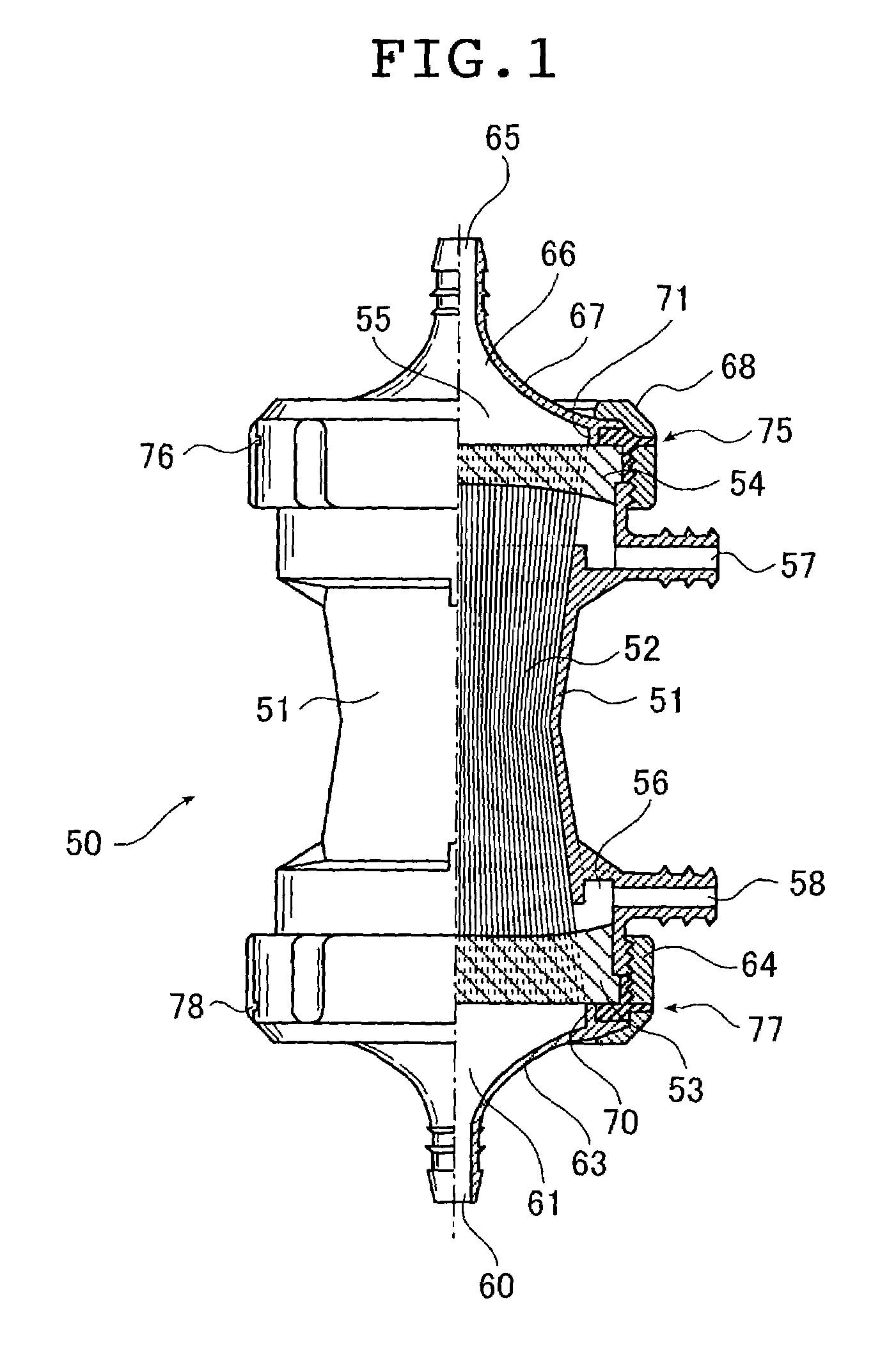Artificial cardiopulmonary circuit system
a circuit system and cardiopulmonary technology, applied in the field of artificial cardiopulmonary circuit systems, can solve the problems of difficult to develop long-lasting compatibility, limited use, undesirable events for organisms, etc., and achieve the effect of high stability
- Summary
- Abstract
- Description
- Claims
- Application Information
AI Technical Summary
Benefits of technology
Problems solved by technology
Method used
Image
Examples
example 1
[0029]To a solution of 10 g of methoxyethyl acrylate in 90 ml of toluene was added azobisisobutyronitrile (AIBN) in an amount equivalent to 0.3 to 0.7 wt % based on the monomer and the mixture was heated at 70° C. overnight under nitrogen atmosphere to perform the synthesis of polymethoxyethyl acrylate (hereinafter abbreviated in some cases as “PMEA”) by a radical polymerization method. The thus obtained polymer was reprecipitated from a solution in mixed solvent of hexane / diethyl ether to obtain PMEA. The viscosity of the PMEA thus obtained was measured by using an E type viscometer Visconic EHD type manufactured by Tokyo Keiki Co., Ltd. having a rotary disc of a conical shape with a diameter of 15.4 mm at 0.5 rpm at a temperature of 65° C. and the results are shown in Table 1. Furthermore, the thus obtained PMEA was coated on the outer surface of the hollow fiber membranes shown illustrated in FIG. 1. That is, the PMEA was dissolved in a mixed solvent of water:methanol:etanol of 6...
example 2
[0030]A solution of 10 g of methoxyethyl acrylate in 90 ml of toluene was cooled to −60° C. Here, butyllithium, a polymerization catalyst, was added and the mixture was stirred for 10 hours under nitrogen atmosphere to perform polymerization. To deactivate living terminals of the polymer, methanol was added to stop the polymerization reaction. Thereafter, the toluene solution was washed with diluted hydrochloric acid to remove metal derived from the catalyst and then washed with distilled water. Then, this was reprecipitated in hexane to obtain anion polymerized PMEA. The viscosity and gas flux retention (%) of the thus obtained PMEA, and PMEA covering amount of the blood contact part were measured in the same manner as in Example 1. The results obtained are shown in Table 1.
examples 3 to 5
[0031]Radical polymerization or anion polymerization conditions (polymerization initiator, polymerization time, reaction temperature, and reaction solvent) were changed to obtain various PMEAs. The viscosity, gas flux retention (%), and PMEA covering amount of the blood contact part of were measured with respect to each of the thus obtained PMEAs in the same manner as in Examples 1 and 2. The results obtained are shown in Table 1.
PUM
| Property | Measurement | Unit |
|---|---|---|
| Temperature | aaaaa | aaaaa |
| Viscosity | aaaaa | aaaaa |
| Viscosity | aaaaa | aaaaa |
Abstract
Description
Claims
Application Information
 Login to View More
Login to View More - R&D
- Intellectual Property
- Life Sciences
- Materials
- Tech Scout
- Unparalleled Data Quality
- Higher Quality Content
- 60% Fewer Hallucinations
Browse by: Latest US Patents, China's latest patents, Technical Efficacy Thesaurus, Application Domain, Technology Topic, Popular Technical Reports.
© 2025 PatSnap. All rights reserved.Legal|Privacy policy|Modern Slavery Act Transparency Statement|Sitemap|About US| Contact US: help@patsnap.com



